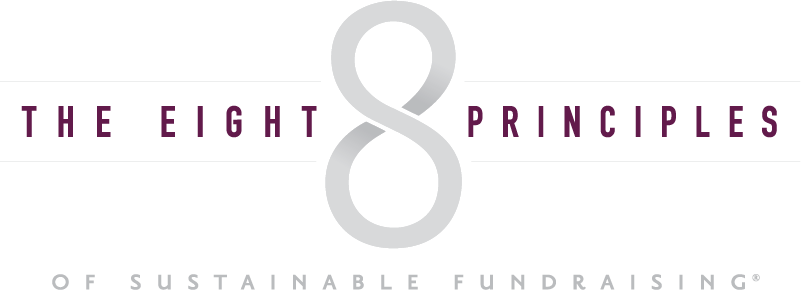In this guest post by Ryan Felix, co-founder of Loop: Design for Social Good, takes up the issue of effective communication for nonprofits. He addresses that all-critical tool the website.
Principle 2 of The Eight Principles® is Begin at the Beginning™. That beginning is a comprehensive program of communication to potential investors that will speak to them. A critical component of that program is a website that works. You know if it’s “working” if it draws potential investors closer and moves them to act,
Your nonprofit organization works hard to lead by example, fighting to achieve a mission that will create a positive impact on your community and the world. And to propel your mission forward, there’s one tool that’s become increasingly important in our digital age: your website.
A well-constructed website reflects your organization’s impact and inspires visitors to get involved. To create a more impactful nonprofit website, we recommend these best practices:
- Maintain consistent branding.
- Demonstrate your direct impact.
- Ensure site navigability.
- Prioritize accessibility.
- Call your supporters into action.
No matter if you’re building your website from scratch or updating a current site, you can use these best practices to amplify your supporter engagement strategy.
1. Maintain consistent branding.
You’ve heard that “consistency is key” and it’s true! Maintaining constancy in your website’s branding ensures that your supporters enjoy a single, cohesive online experience.
To achieve this, create a brand guide that your organization can use to create new content or update existing web pages. According to Loop’s nonprofit branding guide, this guide should include:
- Your nonprofit’s official name and associated taglines.
- Your logo and any variations in the logo.
- The standard font and style of text that you use for your website content.
- Your organization’s primary and secondary colours.
- Your organization’s position, which communicates what makes your nonprofit unique.
- Your tone, which communicates your organization’s personality through characteristics like inclusivity or optimism.
- Your overarching brand message, which encapsulates your mission, vision, and values.
Essentially, your brand guide sets the standards for how you visually communicate your mission. In addition to your website, maintain branding consistency across all your marketing materials to signal your organization’s cohesiveness.
2. Demonstrate impact.
Donors want to know how your organization uses contributions. Tell stories on your nonprofit website to engage your audience and communicate the impact they’ve had on your mission. Consider what stories will best engage your particular audience and pull at their heartstrings.
For example, the following strategies can help you communicate impact:
- Tell the story of a community member (the narrative’s protagonist) who leveraged your organization’s resources to achieve a goal. Get their permission to share their identity beforehand.
- Use images of your audience, volunteers, staff, and other supporters so that your audience matches a face to the mission of your organization.
Demonstrating impact through effective storytelling strategies is a key element of your marketing strategy that should be leveraged both on your website and over email, social posts, and other channels. Then, direct readers back to your site to learn more.
3. Prioritize accessibility.
Accessibility is essential to creating an impactful website because it allows you to reach a broader audience by not alienating site visitors who have certain limitations. For example, some of the accessibility standards to keep in mind include:
- Include alternative text on images, allowing those using screen readers access to text descriptions of images.
- Leverage closed captions and transcripts for videos, ensuring those with hearing impairments don’t miss out on valuable information.
- Use colours with higher contrasts so colour-blind individuals can more easily see your content.
In addition to widening your website’s impact, prioritizing accessibility also makes your content more valuable and highlights your commitment to inclusion.
4. Ensure site navigability.
Make it easy for visitors to find all of the information they’re looking for on your website. Effective navigation prevents supporters from quickly bouncing from your website because they can’t find your mission, donation page, educational materials, or other core information.
Core navigation tools make it easy for visitors to find what they’re looking for:
- A navigation bar to define and lay out your core web pages.
- Buttons leading to core engagement opportunities, like your donation page, email subscription form, and event registration page.
- Links between highly relevant pages, providing additional information to visitors.
If you’re performing a complete overhaul of your website, conduct a usability test for your new site to determine opportunities for improvement. Recruit volunteers and provide them with a list of information to find on your website for this test, then ask them for feedback about the experience.
5. Call your supporters to action.
At the end of the day, your nonprofit website provides an opportunity to engage your audience and encourage them to get more involved with your mission. Get inspired by other top nonprofit websites to determine web-based strategies for encouraging supporters to get involved. For example, you might provide opportunities like:
- Newsletter signups. Provide downloadable resources or other incentives to encourage more people to sign up for your nonprofit’s newsletter.
- Donation pages. Make the most of your donation pages with some of Donately’s donation page strategies, including simplifying the form, improving load speed, and ensuring the page can be shared on social media.
- Event registrations. If you have upcoming events, provide a registration page on your website in an easy-to-find location. Try adding a button on your homepage to push the event!
Offering engagement opportunities like this helps your organization acquire new supporters and continue building relationships with existing ones.
As you research other top nonprofit websites, ask yourself what the organization must prioritize based on the site’s navigation. Hint: Buttons and above-the-fold features are likely higher on the priority list. This will help you establish your own priorities as well.

Ryan is a co-founder of Loop: Design for Social Good who brings a strong intuition and insight to create bold, creative & impactful websites. Ryan has led design studios in Toronto and New York using his knowledge of human centered design to increase meaningful conversions and design enjoyable web experiences.



